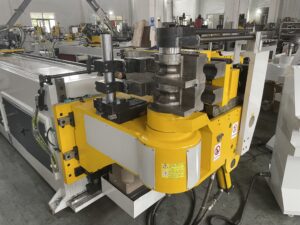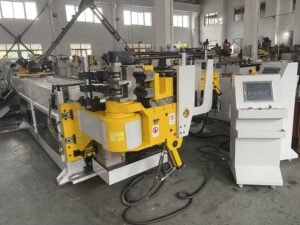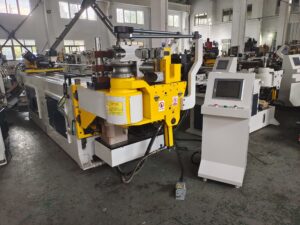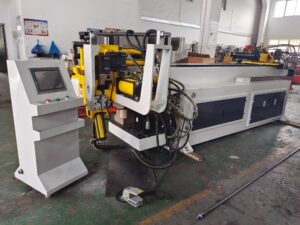Is It Okay Bending Copper Pipe? Everything You Need to Know
When it comes to plumbing, HVAC installations, refrigeration systems, and even DIY home improvement projects, bending copper pipe is often an integral part of the process. Yet, many people—especially those new to plumbing or metalworking—wonder if bending copper pipe is actually safe and effective. Can copper pipes bend without cracking, breaking, or weakening? Is it beneficial or harmful to bend copper pipes rather than using fittings and joints? In this comprehensive guide, we’ll dive deep into the world of copper pipe bending, exploring techniques, potential pitfalls, best practices, useful tips, and even a real-world case study to illustrate the practical applications and results.

Why Bending Copper tube is Commonly Done
Copper pipes are one of the most widely used materials in plumbing, refrigeration, and HVAC systems because of their excellent thermal conductivity, resistance to corrosion, and ease of installation. Bending copper pipe is a common practice because it:
- Reduces Potential Leak Points: Every joint or fitting introduces a potential weak spot. By bending copper pipe instead of using joints, you decrease the risk of leaks significantly.
- Improves Flow Efficiency: Smooth, gradual bends preserve fluid flow better than sharp angles created by fittings.
- Simplifies Installation: Bending copper pipe can simplify installations and reduce labor costs, eliminating the need for extra fittings and connections.
However, while bending copper pipe offers clear advantages, it must be done correctly to avoid damaging the pipe or compromising the integrity of the plumbing or HVAC system.
Understanding the Basics of Bending Copper Pipe
Before you start bending copper pipe, it’s crucial to understand the material’s properties. Copper is ductile, meaning it can be easily shaped without breaking, but it also has limitations. Improperly bending copper pipe can cause:
- Kinks and Buckling: Sharp, uncontrolled bends may collapse the pipe’s walls, restricting fluid flow or causing structural weakness.
- Cracks and Fractures: Excessive stress or improper bending techniques can lead to cracks or micro-fractures, eventually causing leaks or system failure.
- Reduced Internal Diameter: Tight bends can narrow the internal diameter, reducing the efficiency of fluid or gas flow.
So, while bending copper pipe is generally safe and beneficial, it must be done carefully, following specific guidelines and using appropriate tools.
Essential Tools and Techniques for Bending Copper Pipe
Tools for Bending Copper Pipe Properly
To achieve optimal results when bending copper pipe, you’ll need the right set of tools, including:
- Tubing Benders: Manual or hydraulic tubing benders are specifically designed to shape copper tube safely and smoothly, maintaining the pipe’s structural integrity.
- Spring Benders: These simple, inexpensive tools slide either inside or outside the copper pipe, providing support and preventing collapse during bending.
- Pipe Bending Machines: For larger-scale projects or repeated bends, professional pipe-bending machines offer precise, reliable results.
- Torch and Annealing Tools: Annealing copper tube(heating and cooling it to soften the material) makes bending easier and reduces the risk of cracking, especially for larger diameters or tight bends.
Recommended Techniques for Bending Copper Pipe
When bending copper tube, follow these best practices:
- Avoid Sharp Angles: Aim for smooth, gradual bends rather than abrupt angles. This protects the internal structure and ensures efficient flow.
- Use Mandrels for Tight Radii: For tight bends, use a mandrel or internal support (like a spring or sand filling) to prevent collapse.
- Anneal the Pipe When Necessary: For harder copper pipes or tight bends, heat the pipe until it glows cherry-red, then allow it to cool slowly. Annealing restores flexibility and reduces the risk of cracking.
- Measure Twice, Bend Once: Always measure and mark clearly before bending. Once bent, copper pipes are challenging to reshape accurately without compromising integrity.
Common Mistakes to Avoid When Bending Copper Pipe
Even experienced professionals sometimes make mistakes when bending copper tube. Here are common pitfalls to avoid:
- Not Supporting the Pipe: Bender copper tube without adequate support leads to kinks or collapse. Always use correct tooling or internal support.
- Overheating the Copper: While annealing helps soften copper, overheating can weaken and damage the pipe, reducing its lifespan.
Incorrect tube Selection: Choosing the wrong copper tube type (such as rigid Type M instead of softer Type K or L) can make bender difficult or impossible without damage.
Real-World Case Study: HVAC System Installation
To illustrate the practical application and effectiveness of bendercopper pipe, let’s review a real-world example of an HVAC installation project:
Background and Challenge
In 2022, a commercial property owner approached HVAC specialists with a problem: their existing HVAC system, installed five years earlier, frequently leaked refrigerant fluid and required ongoing costly maintenance. The original installation involved multiple soldered joints and fittings, increasing potential leak points.
Solution Implemented
After carefully assessing the HVAC system, the technicians recommended replacing all refrigerant lines with continuous copper tubing bent using professional tubing benders. By eliminating unnecessary joints and fittings, they minimized potential leak points significantly.
The HVAC technicians carefully measured and mapped the required pipe paths, then used hydraulic tubing benders to create smooth, precise bends, ensuring maximum flow efficiency and system integrity.
Results and Benefits
After completion, the commercial property owner experienced:
- A significant reduction in refrigerant leaks (down by 95%).
- Improved HVAC system efficiency and performance (approximately 12% energy savings annually).
- Lower maintenance costs and fewer system downtimes.
This real-world example clearly demonstrates that bender copper pipe—when done correctly—can significantly enhance the efficiency, reliability, and longevity of plumbing or HVAC systems.
Safety Considerations When Bending Copper Pipe
Safety should always be paramount when bender copper pipe. Follow these tips to ensure safe operations:
- Wear Personal Protective Equipment (PPE): Gloves, eye protection, and appropriate clothing help prevent injuries during bending and annealing processes.
- Proper Ventilation: When annealing copper pipe using a torch, ensure adequate ventilation to avoid inhaling harmful fumes.
- Inspect Pipes After Bending: Always perform thorough visual and functional inspections after completing bends to ensure no structural damage occurred.
Frequently Asked Questions about Bender Copper Pipe
Can bender copper pipe weaken it?
If done incorrectly, yes, bender copper pipe can weaken or damage it. However, when performed correctly using recommended tools and techniques, bender copper pipe rarely weakens it and often enhances structural integrity compared to joints and fittings.
What is the smallest radius achievable when bender copper pipe?
Generally, the smallest recommended bend radius is approximately three times the external diameter of the pipe. Tighter bends risk collapsing or damaging the pipe.
Can copper pipes be bent multiple times?
Repeated bender weakens copper pipe, increasing the risk of cracks and failure. Ideally, copper pipe should be bent only once or twice at most. If multiple adjustments are necessary, replace the pipe section to ensure safety and reliability.



